
CHAOS
Une image
n’est pas forte
parce qu’elle est brutale
ou fantastique
mais parce que
l’association des idées
est lointaine
lointaine
et juste
J.L. Godard
CHAOS, a creation by Maria Federica Maestri and Francesco Pititto, is a contemporary performance piece based on Book One of The Metamorphoses by Publius Ovidius Naso. The performance project continues a creative path based on Ovid’s work that began in 2007 with the staging of RADICAL CHANGE, a performance creation based on Ovid’s Metamorphoses. Born from a visual, visual, filmic, spatial and sound research that uses Ovid’s poetic and philosophical reflections on the chaos that precedes the creation of man as a textual and identity substratum, the new work investigates, with an extreme visual and symbolic power and aimed at a scenic composition built through visions and archetypal illuminations, poetic references of an original dimension between myth and matter, the path of generation from universal nothingness to the creation of humanity and the passage through the four ages described by the poet: Golden Age, Silver Age, Bronze Age, Iron Age. The bodies of the performers become mythical simulacra able to reflect Ovid’s poetic impulses through a formative path, built on a scaffolding of attractions and repulsions, contacts and estrangements, mutual maturations and destructions. The Latin language enters the performative dimension creating a textual frame of great symbolic tension: the words are impressed in the sequences providing a visionary artistic support that abstracts the gaze from the scenic actions. The word becomes an absolute verb inside the performers’ bodies, creating a stratified sound fabric where the pre-human identity of the shapeless and original mass becomes, after an extreme process of evolution, the legend of the birth of man.
GOD.SEPARATION OF ELEMENTS. La jeune fille presents and exhibits her own naked body before a series of “badly combined things” begin the superimposed architecture of material and chromatic elements. Before and after the female body de-constructs and re-constructs itself by changing form and content – ante mare et terras … -, the unknown history that each sign/garment brings with it re-forms sense before and after the here-and-now of the body that appears to us. Informed and confused, the superimposition builds – floor by floor – a new gestural and corporeal texture, the objects literally incarnate, deform their profile, create the new outline, the simulacrum of the human.
La jeune fille, now a unicum of semantic values, separates and distributes to the new born – in order and harmony – the fragment necessary for the progress of aesthetic creation. New history is generated by re-forming and generating new expressiveness, not the other way around. Two bodies have been added to the elements, one male already marked by time and one female, a sensitive refraction of the original.
THE EARTH AND THE SEA. But in composing the new scene of the globe, the primary goddess of the division of heaven and earth sends the third imago – armed with word and voice – to announce to the world the new All, texts already written for the reborn human race.
THE FIVE ZONES. Jeune fille Marion, who once lived within the confines of a book – Georg Büchner’s ‘The Death of Danton’ – still enunciates her own double between man and Nature, between consciousness and unconsciousness: ‘I have become like the sea that swallows everything and stirs ever deeper’.
THE FOUR WINDS. Turn, turn, faster than the earth, the woman who embraces not just one love but all love.
HUMANKIND, mankind with its ball-shaped heads. In the shape of the world. The generation of lineages begins, mothers and fathers, sons and sisters, on anatomical beds where procreations and deaths follow one another incessantly and terrifyingly, where children blame fathers and mothers for the unspeakable suffering and hardships inflicted on them by unwanted births, for the joys and enthusiasms at the end of their lives marked by the mathematical rhythms of evolution and continuous becoming. Natus Homo est.
HUMANKIND: creation wants to create, in its own shape and likeness, as a skull a round ball. The artefact wants to become a creator, but the product is weak, it cannot stand the strain of the world. The simulacrum of the god is now a simulacrum of itself, while the god looks at it from afar.
HUMANKIND. “What is man? How is it possible that there is a thing that ferments and boils like chaos?” The old man asks himself – as Hölderlin asked himself in his Hyperion -, cared for by the daughters who first cursed him, now he is dried and alone, ready for the next incontinence, for the outflow of what is left of his physical power, alone in the suffering of abandonment, with his daughters witnessing his own, intimate and profound, defeat.
GOLDEN, SILVER, BRONZE, IRON AGE. But man regenerates, or rather the female more than the male. Regeneration is dramaturgical development, it is change – metamorphosis, radical change, chaos -, the plot of illusion and invention, of lies and poetry, of the stench and scent of the human: Shakespeare. “Come bitter commander, come gross guide! You desperate pilot -“. The old man drops his trousers and shows his nudity wrinkled by time, he takes revenge on younger bodies and the beautiful words of invented worlds. He is a male with no more words, only the sound of desire, of hunting, of apprehension. He will realise that the true always incorporates, sooner or later, the false: “So with a kiss I die!”
The old man coiffs with pieces of the past, of other eras. Other signs.
Only legacies, departures, a last vulgar gesture, repeated, to the gods. Francesco Pititto
from the First Book of The Ovid’s Metamorphoses
creation || Maria Federica Maestri | Francesco Pititto
transletion | dramaturgy | imagoturgy || Francesco Pititto
stage installation | visual elements || Maria Federica Maestri
music || Andrea Azzali
performers || Valentina Barbarini | Giuseppe Barigazzi | Elena Sorbi | Laura Vallavanti
project care || Lisa Gilardino
light design || Andrea Morarelli
production || Lenz Rifrazioni
première || Parma, Lenz Teatro, XIII ed. Festival Natura Dèi Teatri, November,15 (2008)
duration || 60 min
The creation was presented at the Festival Internazionale Natura Dèi Teatri in Parma (2008) and at Linea d’Ombra-Festival Culture Giovani in Salerno (2009).
“Chaos confirms the visionary radicalism with which Lenz has been exploring Ovid’s Metamorphoses for some time. Here we are at the beginning of time, inside the chaos that precedes the birth of mankind, reflected in the indistinctness of the macro anatomical images in evolution on the three large screens that delimit the stage space and in the sonic magma of Andrea Azzali’s music. The distance of the ages of myth is reflected in the lunar bodies on which the performative writing of the two creators, Maestri and Pititto, operates. Unripe bodies of young women with shaved hair that clash with the gravity of an old man (and very good performances by Elena Sorbi and Laura Vallavanti who act together with the now veteran Valentina Barberini). They attract and repel each other by playing with the few props on stage, stools, hospital beds, basketballs; they let themselves be crossed by the words of the Latin poem; they monologue with those of Romeo & Juliet. Meanwhile, they continue to take off and put on their shirts and shorts. There is in those bodies, in their gestures that precede the very idea of an action, the sexual energy of a primordial world that can become provocation and violence without reaching eros. And an innocence that wounds. Something that remains and asks not to be consumed in a hurry, to be seen again. But what a thrill it is to suddenly hear Hölderlin’s once much-loved words echoing again”.
Gianni Manzella, il manifesto
If theatre is shock and scandal, Chaos, which Lenz Rifrazioni draws with radical visionarity from Book I of Ovid’s “The Metamorphoses”, is a great compulsive research, a work on the magma of sensuality. In Maria Federica Maestri and Francesco Pititto’s creation, seen at the Festival Culture Giovani in Salerno, the audacity of flattery and challenges of three immature female bodies in promiscuity with a mature and impenetrable man, the urges and pity of the poet’s four eras, and the sounds of his own words, of Hölderlin and Shakespeare, while more screens give the emotion of close-ups of the skin.
Rodolfo Di Giammarco, la Repubblica







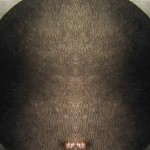
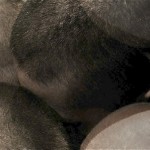
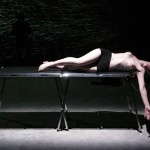
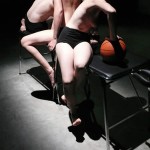

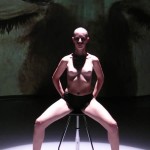
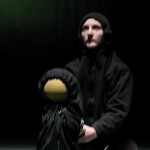
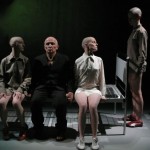
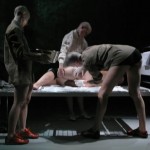
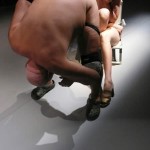
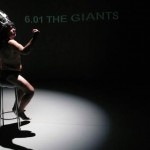
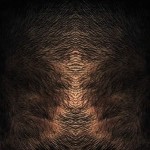

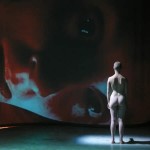
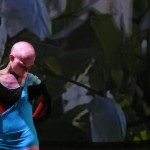
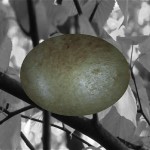
![[cml_media_alt id='2644']chaos[/cml_media_alt]](https://lenzfondazione.it/wp-content/uploads/2014/07/chaos.jpg)

